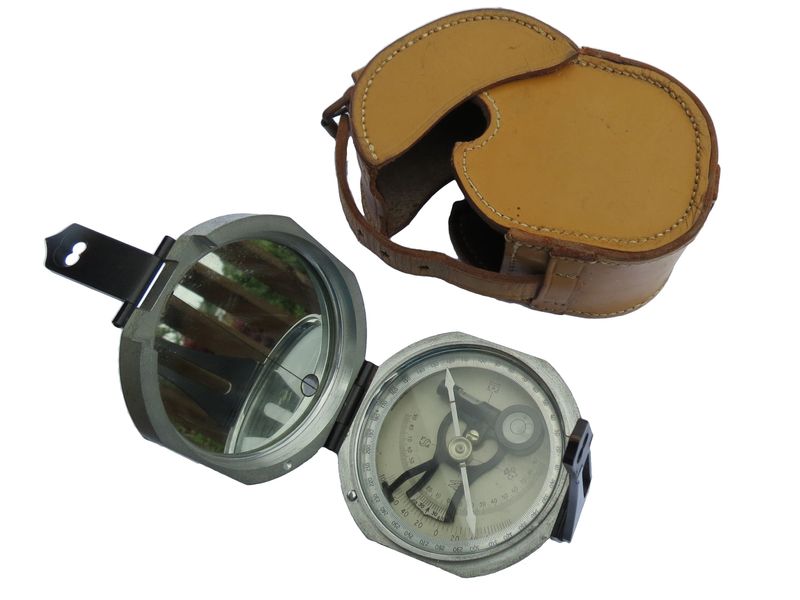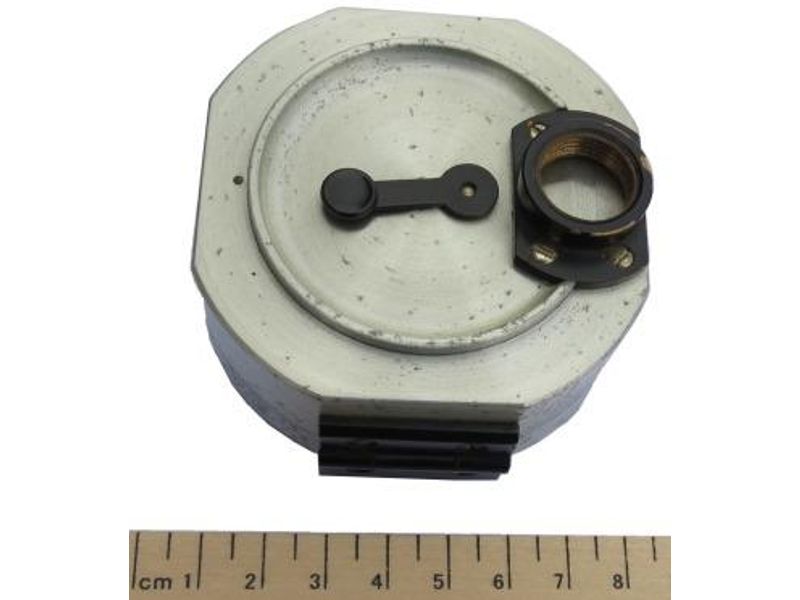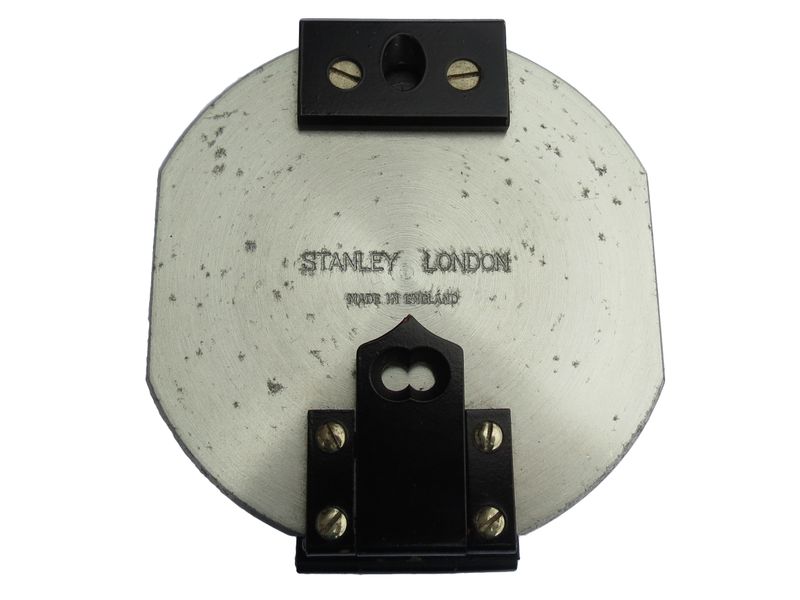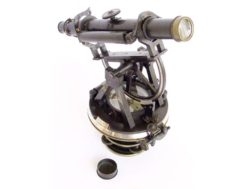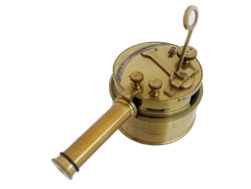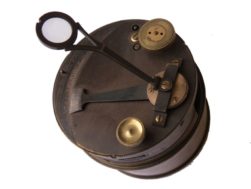Description
“Brunton” pocket transit (combined compass and clinometer) manufactured by Stanley, London. It is also sometimes known as a natural sine compass.
Used for a number purposes including land surveying: the compass has a clinometer to allow the measurement of vertical angles. Natural Sine Tables can be used in conjunction with the clinometer. On sloping ground to determine the difference in elevation from you to a distant point. You would use the clinometer to measure the vertical angle between horizontal and the distant point. Using the Natural Sine Table find the sine of the angle, multiply it times the slope distance to the point in question and that gives you the difference in elevation of the ground from your point to the point in question.
The compass has three main parts, box, sighting arm, and lid. The box contains most of the components: the needle; bull’s eye level (round level to read horizontal angles); clinometer level (barrel-shaped) and clinometer scale (for reading vertical angles); lift pin or hold button (operated by a button on the rim to lock the needle); clinometer lever on the back of the box to set the vertical angle (see Image 4); graduated circle (to read the bearing). The lid has a mirror on the inside to allow a view of the inside of the box when it may be difficult to see directly into the box when setting the clinometer. When the lid is closed the lift pin is held in place to protect the needle.
The case has squared-off edges which allows the compass to be placed on a sloping surface and with use of the lever on the back the bubble in the clinometer level can be centred and the angle measured on the graduated circle in the box.
The compass can be calibrated by placing the compass on a surface known to be horizontal and use the adjusting screw (on the side of the compass) to ensure that the clinometer bubble is centred at 0°.
The base of the compass has a threaded plate to allow the compass to be attached to a tripod.
The compass has a fitted leather case.
This is a late example of the transit invented by D W Brunton and patented in the USA in 1894. For an instruction manual for a similar Brunton pocket transit go to https://cdn.shopify.com/s/files/1/0217/7948/files/Transit_Manual.pdf.
The transit was passed down to the donor from her grandfather Alec Gilbertson FICE FIMechE who was a chartered civil and mechanical engineer with world-wide experience. To see a copy of his extensive CV click here.

